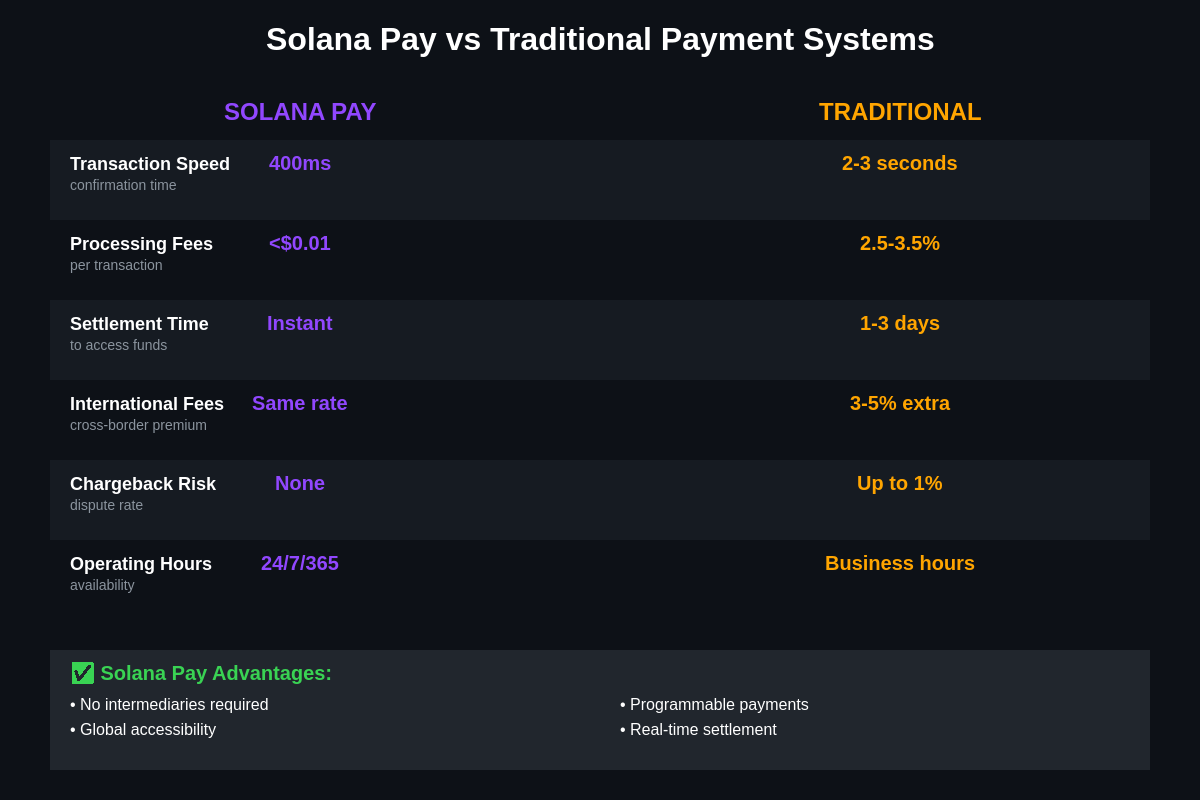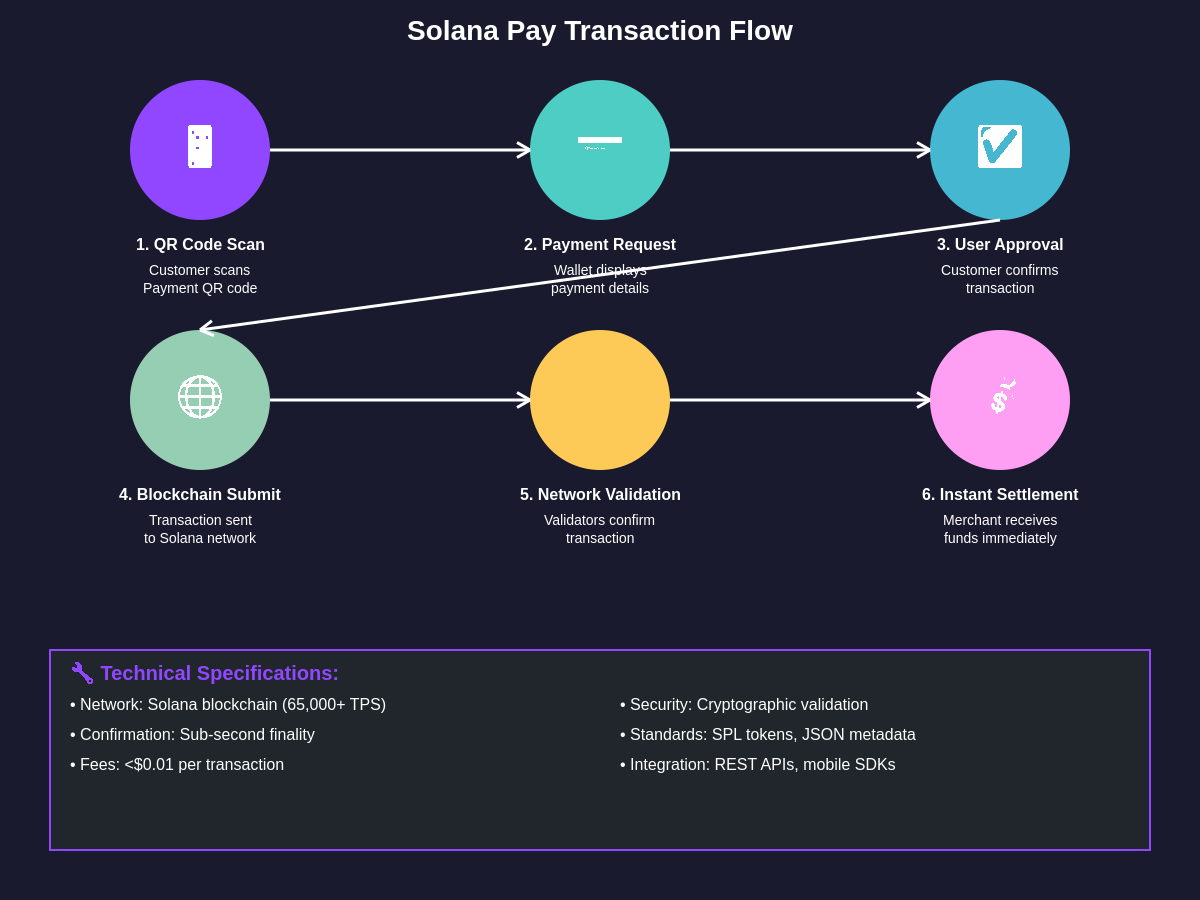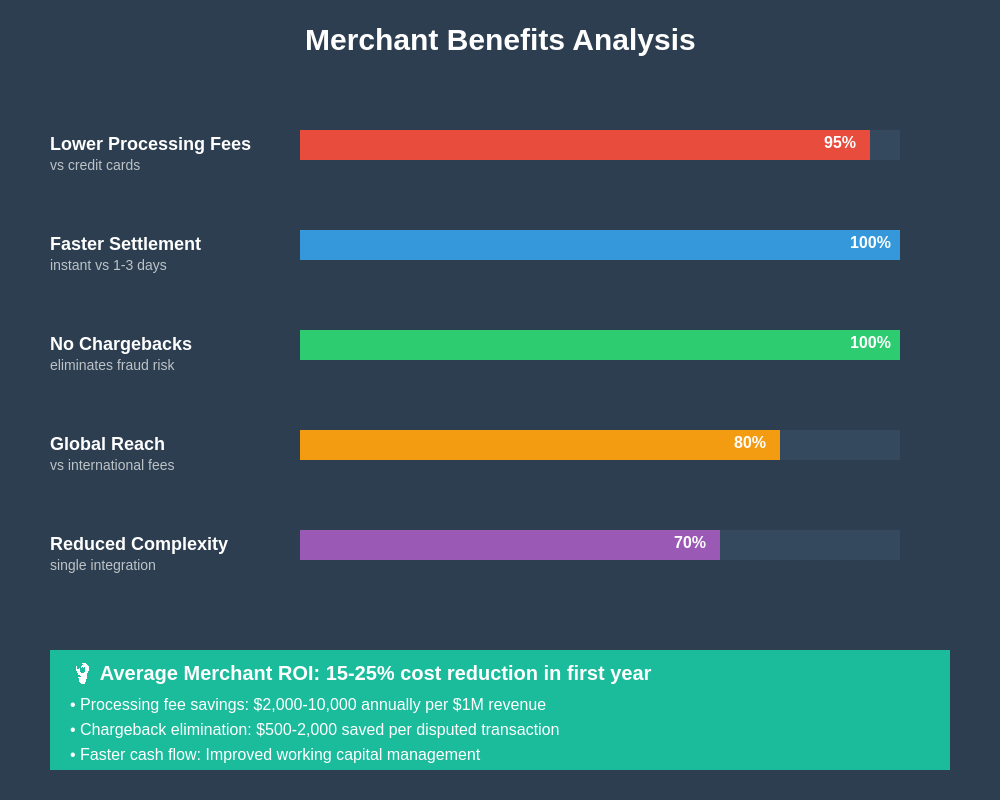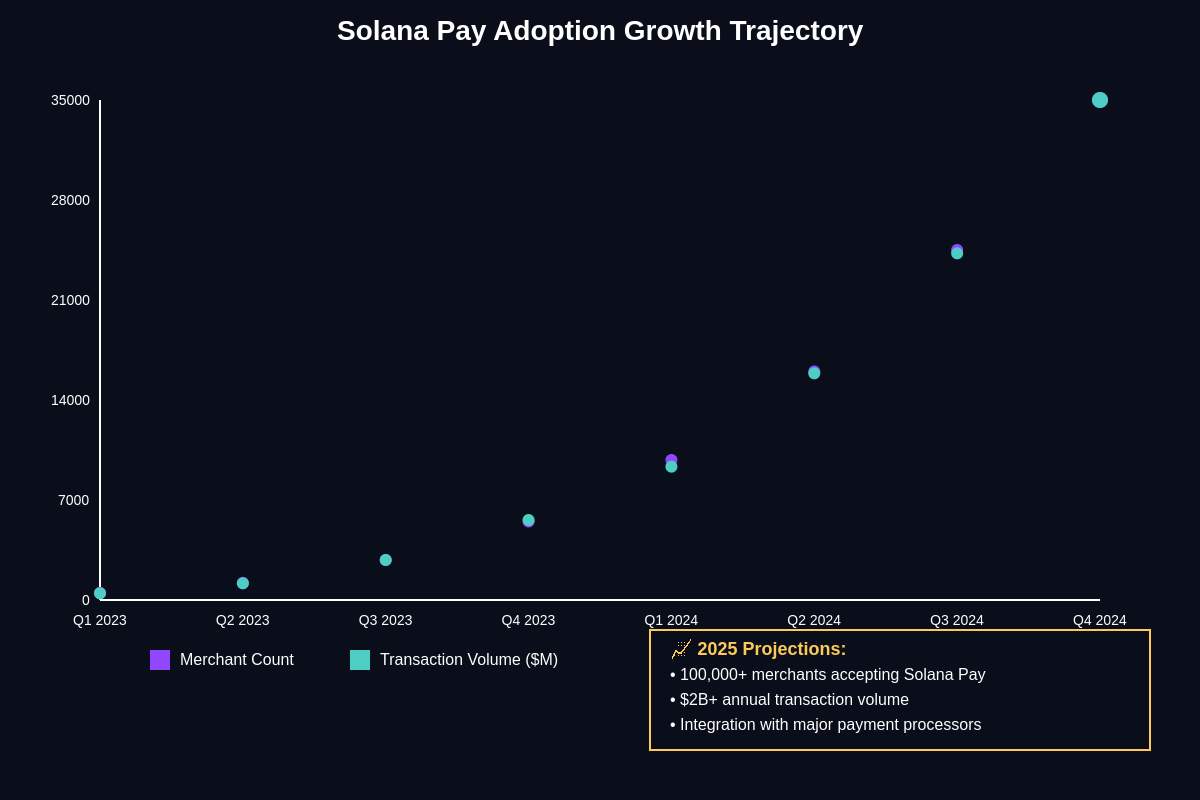The cryptocurrency ecosystem has long promised to revolutionize digital payments, but technical barriers, scalability issues, and poor user experiences have prevented widespread adoption. Solana Pay represents a paradigm shift in this landscape, offering a comprehensive payment solution that combines the speed and efficiency of the Solana blockchain with the familiar interface patterns that mainstream users expect from traditional payment systems. For comprehensive trading strategies and market analysis tools, explore TradingView’s advanced charting platform, which provides real-time data on Solana and payment token markets.
The Evolution of Cryptocurrency Payment Systems
Traditional cryptocurrency payment systems have struggled with fundamental challenges that prevent mainstream adoption, including high transaction fees, slow confirmation times, complex user interfaces, and volatile pricing mechanisms that make everyday commerce impractical. Bitcoin’s network congestion can result in transaction fees exceeding the value of small purchases, while Ethereum’s gas fees have made micropayments economically unfeasible during periods of high network activity.
The emergence of layer-two solutions and alternative blockchain architectures has addressed some of these limitations, but most implementations still require users to navigate complex wallet interfaces, manage private keys, and understand blockchain-specific concepts that remain foreign to average consumers. Solana Pay differs from these approaches by abstracting away much of the technical complexity while maintaining the decentralized benefits that make cryptocurrency payments attractive to merchants and consumers.
Payment processing in the traditional financial system involves multiple intermediaries, each taking a percentage of the transaction value while adding processing delays that can extend settlement times to several business days. Credit card processors typically charge merchants between 2.5% and 3.5% per transaction, with additional fees for international payments, chargebacks, and premium card rewards programs that ultimately increase costs for both merchants and consumers.
Solana’s Technical Infrastructure Advantage

Solana’s underlying blockchain architecture provides the technical foundation necessary for mainstream payment adoption through its unique consensus mechanism that combines Proof of History with Proof of Stake validation. This hybrid approach enables the network to process over 65,000 transactions per second with confirmation times under 400 milliseconds, creating a user experience comparable to traditional payment systems while maintaining decentralized validation and security.
The network’s transaction costs average less than $0.01 regardless of transaction size, making micropayments economically viable for the first time in cryptocurrency history. This cost structure enables use cases that were previously impossible, such as pay-per-article journalism, micro-donations to content creators, and granular subscription services that can charge users based on actual usage rather than fixed monthly fees.
Solana’s programming model supports sophisticated smart contracts through its Rust-based development environment, enabling payment applications to implement complex business logic including multi-party transactions, escrow services, and automated subscription management. The blockchain’s state compression technology allows applications to store large amounts of data on-chain at minimal cost, supporting features like detailed transaction histories and customer loyalty programs without compromising performance.
Solana Pay Protocol Architecture

Solana Pay implements a standardized protocol that enables seamless integration between merchants, payment processors, and cryptocurrency wallets without requiring custom implementations for each participant. The protocol uses QR codes and deep linking to initiate transactions, allowing customers to complete payments using any compatible wallet application while maintaining a consistent user experience across different platforms and devices.
The payment request format includes comprehensive metadata that supports traditional commerce features including itemized receipts, tax calculations, shipping information, and customer loyalty program integration. Merchants can specify accepted tokens, implement dynamic pricing based on real-time exchange rates, and configure automatic conversion to stablecoins to minimize exposure to cryptocurrency price volatility.
Transaction finality on Solana occurs within seconds rather than minutes or hours required by other blockchain networks, enabling point-of-sale applications that match the speed expectations of traditional payment systems. The protocol supports both immediate settlement for simple purchases and more complex payment flows including installment payments, subscription billing, and conditional transactions that execute based on external data feeds.
Real-time transaction monitoring through TradingView’s comprehensive market data allows merchants to track payment flows and analyze customer behavior patterns that inform business decisions. The protocol’s open-source nature enables continuous improvement and feature additions driven by community development and merchant feedback.
Merchant Integration and Business Benefits

Solana Pay’s merchant integration process eliminates many of the technical barriers that have prevented cryptocurrency payment adoption in traditional retail environments. The protocol provides software development kits for popular programming languages and e-commerce platforms, enabling businesses to add cryptocurrency payment support without extensive blockchain expertise or custom development resources.
Settlement advantages include immediate access to funds rather than the multi-day clearing periods required by traditional payment processors, improving cash flow management for businesses of all sizes. Merchants retain full control over their payment processing without relying on third-party intermediaries that can freeze accounts, impose holds on funds, or modify terms of service unilaterally.
The elimination of chargeback fraud represents a significant cost savings for online merchants, particularly those in high-risk industries where chargeback rates can exceed 1% of total transaction volume. Cryptocurrency payments are irreversible once confirmed, shifting the burden of fraud prevention to the payment initiation stage rather than requiring merchants to defend against post-transaction disputes.
International commerce benefits include unified global payment processing without the complexity of managing multiple regional payment providers, currency conversion services, and compliance requirements that vary by jurisdiction. Solana Pay enables businesses to accept payments from customers worldwide using a single integration while automatically handling currency conversion and settlement in their preferred denomination.
Consumer Experience and Adoption Drivers
The consumer experience with Solana Pay closely mirrors traditional payment applications, requiring only a compatible wallet application and basic familiarity with QR code scanning or link-based payment initiation. Wallet applications handle all blockchain interaction complexity, presenting users with familiar interfaces that display payment amounts in their preferred currency denomination and transaction histories that resemble traditional banking applications.
Transaction speed creates a user experience indistinguishable from contactless card payments, with confirmation occurring before customers can return their mobile devices to their pockets. This immediacy eliminates the uncertainty and waiting periods associated with traditional cryptocurrency transactions while maintaining the security benefits of blockchain validation.
Privacy advantages include reduced personal information sharing compared to credit card transactions, which typically require names, addresses, and sensitive financial account numbers that create identity theft risks if compromised in data breaches. Solana Pay transactions can be completed using only wallet addresses, which don’t inherently contain personal information while still enabling merchant features like loyalty programs and purchase histories.
Cost savings for consumers emerge from reduced merchant fees that can be passed through as discounts, elimination of foreign transaction fees for international purchases, and protection against credit card fraud that often results in temporary account freezes and inconvenient verification processes. The growing network of merchants accepting Solana Pay creates increasing utility that drives organic adoption as users discover practical benefits in their daily spending.
Real-World Implementation Case Studies
Shopify’s integration of Solana Pay demonstrates the protocol’s viability for large-scale e-commerce applications, enabling millions of merchants to accept cryptocurrency payments without custom development or additional infrastructure investments. The integration supports all standard Shopify features including inventory management, customer accounts, and promotional discounts while adding cryptocurrency-specific capabilities like multi-token support and automatic stablecoin conversion.
Point-of-sale implementations in physical retail environments have shown particular success in regions with limited traditional payment infrastructure or high credit card processing fees. Coffee shops, restaurants, and retail stores using Solana Pay report improved profit margins from reduced processing fees and faster settlement times that improve working capital management.
Subscription service implementations leverage Solana Pay’s programmable payment capabilities to create more flexible billing models than traditional payment processors support. Services can automatically adjust billing amounts based on usage, implement loyalty discounts, and handle international customers without the complexity of managing multiple payment providers and currency conversion services.
Cross-border remittance applications built on Solana Pay offer significant improvements over traditional money transfer services, with transaction costs under 1% compared to typical remittance fees between 5% and 10% of transfer amounts. The near-instantaneous settlement enables recipients to access funds immediately rather than waiting days for traditional wire transfers to clear.
Integration with Traditional Financial Systems
Banking partnerships and regulatory compliance efforts are creating bridges between Solana Pay and traditional financial institutions, enabling features like automatic conversion to fiat currencies and integration with existing accounting systems. These partnerships address merchant concerns about cryptocurrency volatility while maintaining the operational benefits of blockchain-based payments.
Payment processor integrations allow businesses to accept both traditional and cryptocurrency payments through unified interfaces, reducing operational complexity while providing customers with payment method choice. These integrations often include automatic reconciliation features that simplify accounting and tax reporting requirements for businesses operating in multiple jurisdictions.
Enterprise implementations include integration with existing customer relationship management systems, enterprise resource planning platforms, and business intelligence tools that enable sophisticated analysis of payment data and customer behavior patterns. The detailed transaction metadata supported by Solana Pay provides richer analytics than traditional payment systems while maintaining customer privacy through cryptographic addressing.
Competitive Landscape and Market Position

Solana Pay’s competitive advantages over other cryptocurrency payment solutions include superior transaction throughput, lower costs, and faster settlement times that create user experiences comparable to traditional payment systems. The protocol’s open-source nature and standardized interface enable broader ecosystem development compared to proprietary payment solutions offered by individual companies.
Comparison with traditional payment systems reveals significant advantages in international transactions, settlement speed, and processing costs, while competitive gaps remain in consumer familiarity, merchant acceptance networks, and integration with existing financial management tools. The protocol’s rapid development cycle and active community suggest these gaps will narrow as adoption increases and feature development continues.
Market positioning focuses on serving underbanked populations, international commerce, and digital-native businesses that value the operational advantages of cryptocurrency payments over traditional alternatives. The protocol’s flexibility enables customization for specific industry verticals including gaming, digital content, and subscription services that benefit particularly from programmable payment capabilities.
Regulatory Environment and Compliance
Regulatory clarity around cryptocurrency payments varies significantly by jurisdiction, with some regions providing clear frameworks while others maintain ambiguous or restrictive policies that complicate merchant adoption. Solana Pay’s design accommodates various regulatory requirements through configurable compliance features including transaction monitoring, reporting capabilities, and integration with know-your-customer verification services.
Tax reporting implications for both merchants and consumers require careful consideration, as cryptocurrency payment transactions may be subject to capital gains tax treatment depending on local regulations. The protocol’s detailed transaction records support automated tax reporting while maintaining user privacy through selective disclosure capabilities that reveal only necessary information to tax authorities.
Anti-money laundering compliance requirements can be addressed through optional integration with blockchain analysis services that monitor transaction patterns and flag suspicious activities. These integrations can be implemented without compromising user privacy for legitimate transactions while satisfying regulatory requirements for financial service providers.
Technical Challenges and Solutions
Scalability considerations for widespread adoption include network capacity planning, validator infrastructure requirements, and application layer optimization that ensures consistent performance as transaction volumes increase. Solana’s architectural design supports horizontal scaling through parallel transaction processing, but real-world deployment scenarios require careful monitoring and resource allocation to maintain service quality.
User experience challenges include wallet application complexity, private key management, and error recovery procedures that must be simplified for mainstream adoption. Hardware wallet integration and social recovery mechanisms provide security improvements while reducing the technical burden on users who prefer familiar interface patterns over cryptographic complexity.
Network reliability requirements for payment applications demand high availability and consistent performance that matches traditional payment system expectations. Solana’s validator network and consensus mechanism provide strong reliability guarantees, but payment applications must implement appropriate error handling and offline transaction capabilities to ensure seamless user experiences under all conditions.
Future Development and Roadmap
Technical roadmap priorities include enhanced privacy features through selective disclosure mechanisms, improved cross-chain interoperability with other blockchain networks, and advanced programmable payment capabilities that support complex business logic and automated transaction execution. These developments will expand the protocol’s applicability to increasingly sophisticated commercial applications.
Partnership expansion efforts focus on major e-commerce platforms, point-of-sale system providers, and financial service companies that can accelerate merchant adoption and consumer familiarity. Strategic partnerships with payment processors and banking institutions create hybrid solutions that combine cryptocurrency benefits with traditional financial system integration.
Feature development priorities include enhanced customer loyalty program support, sophisticated subscription management capabilities, and integration with emerging technologies like augmented reality shopping experiences and Internet of Things payment automation. These features position Solana Pay as a comprehensive payment platform rather than simply a cryptocurrency transaction mechanism.
Market Impact and Economic Implications
The broader economic impact of mainstream cryptocurrency payment adoption includes reduced reliance on traditional financial intermediaries, increased financial inclusion for underbanked populations, and new business models enabled by programmable money and micropayment capabilities. Solana Pay’s success could accelerate these trends by demonstrating practical benefits that drive consumer and merchant adoption.
Monetary policy implications include reduced central bank control over payment systems and increased importance of cryptocurrency market dynamics in consumer purchasing power. As cryptocurrency payments become mainstream, traditional monetary policy tools may become less effective while new regulatory approaches become necessary to maintain economic stability.
Global commerce transformation potential includes reduced barriers to international trade, elimination of currency conversion inefficiencies, and new forms of cross-border collaboration enabled by unified global payment infrastructure. These changes could particularly benefit developing economies by providing access to global markets without dependence on traditional correspondent banking relationships.
For real-time market analysis and price tracking of Solana and related payment tokens, TradingView provides comprehensive charting tools that help traders and businesses monitor market conditions affecting cryptocurrency payment adoption. The platform’s advanced analytics support informed decision-making for businesses considering cryptocurrency payment integration.
Conclusion and Industry Outlook
Solana Pay represents a critical advancement in cryptocurrency payment technology that addresses fundamental barriers to mainstream adoption while maintaining the decentralized benefits that distinguish cryptocurrency from traditional payment systems. The protocol’s technical capabilities, growing merchant adoption, and improving user experience suggest that cryptocurrency payments may finally be approaching practical viability for everyday commerce.
The success of Solana Pay will depend on continued technical development, regulatory clarity, and merchant education efforts that demonstrate practical benefits over traditional payment alternatives. As the protocol matures and adoption increases, it may serve as a catalyst for broader cryptocurrency payment adoption that transforms how consumers and businesses think about money transfer and financial infrastructure.
The convergence of improved technology, clearer regulations, and growing consumer familiarity with cryptocurrency suggests that 2024 and 2025 may represent an inflection point for cryptocurrency payment adoption. Solana Pay’s comprehensive approach to addressing technical, regulatory, and user experience challenges positions it to play a central role in this transformation as cryptocurrency payments transition from experimental technology to mainstream commercial infrastructure.
Disclaimer: This article is for informational purposes only and does not constitute financial advice. Cryptocurrency investments and payment systems involve risks including price volatility, regulatory changes, and technical vulnerabilities. Readers should conduct their own research and consult with qualified financial advisors before making investment decisions or implementing cryptocurrency payment systems. Past performance does not guarantee future results, and the cryptocurrency market can be highly unpredictable.